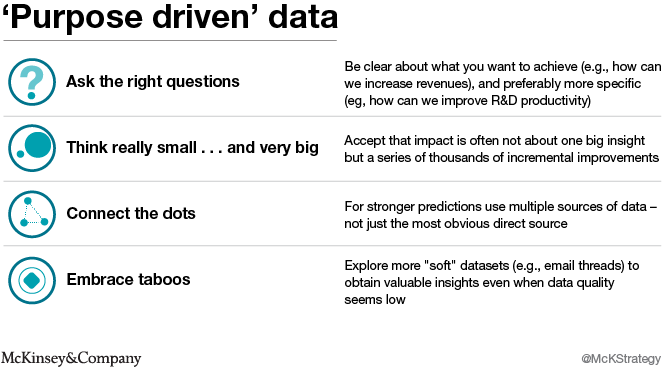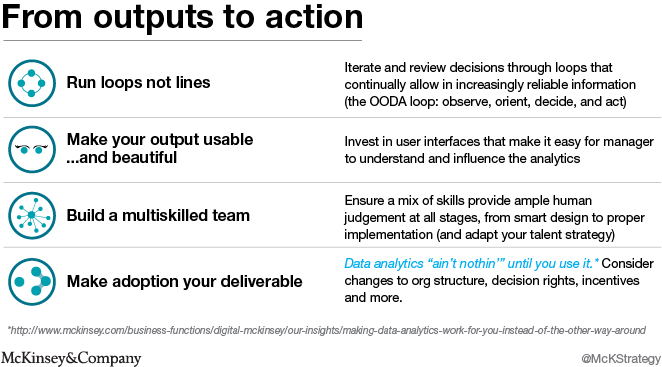In 2017, I hope to see a critical mass of senior managers fully realize they are preventing their organizations from making better data-driven decisions. They need to understand the barriers are not data availability, quality or connectivity, nor that advanced analytics are too difficult to implement. Rather, they now must muster the conviction to challenge every aspect of their business and look for ways to radically improve with better analytics.
To be sure, “big data” has been hyped for years. Dan Ariely, a professor of psychology and behavioral economics, brilliantly described “big data” review as similar to that of teenagers discussing sex: everyone talks about it without knowing quite what it is and claiming to have experience with it because everyone else does.
In a few companies, nearly every decision revolves around data analytics. Some have used superior algorithms to improve decision making in credit scoring or category management years before their competitors.
Amazingly, it’s still rare to see “big impact through big data.” Within a group representing major companies, 75 percent of the analytics leaders told us they have achieved less than 1 percent of cost or revenue improvement. Why? Earlier this year we at McKinsey conducted a global survey asking executives about the effectiveness of their data and analytics programs. Of those surveyed, 86 percent were not satisfied, and they indicated the biggest challenge is lack of leadership support.
We also interviewed senior executives of very data driven businesses, and even they feel they aren’t getting the most out of their data. AIG’s Chief Science Officer, Murli Buluswar perfectly defines the hurdle when he describes the change as being one from a “knowing culture to learning culture; from a culture that largely depends on heuristics in decision making to a culture that is much more objective and data driven and embraces the power of data and technology.”
So despite the hype, change has been slow. We know from many walks of life that even when the reason to change is clear, old habits are hard to turn. It took safety-advocacy groups nearly 40 years in the U.S. to convince half of all drivers in to use seat belts (usage rates were only about 14 percent in 1984 before about 30 states passed seat-belt laws and the usage rate rose to 46 percent in five years. Today those rates are around 85 percent, according to the Centers for Disease Control and Prevention). A similar example can be seen with the effort to require doctors over the past 150 years to wash their hands.
Like drivers, senior line managers are the ones holding the wheel, and even though some organizations may remain deadlocked for various reasons, it is clear who is supposed to be doing the steering. And the best managers are expected to use the best information available to draw insights and improve foresight.
There are three reasons why I am hopeful that in the coming year we will see a real acceleration in the number of top managers who galvanize their organization to increase their analytic use:
First, analytics are easier and cheaper than ever. Computing prices are 20 times lower than in 2010 and now it is possible to store tenfold more data at the same cost. Data visualization has massively improved, and its market is growing according to IDC at 2.5 times the rate of the overall business-intelligence market.
Second, as more powerful algorithms shape our consumer experience I hear from more executives who are inspired about the scale of possibility for their own businesses.
Third and perhaps most importantly, senior managers have to realize that the field of analytics is a transformational lever they can decisively pull in a world fraught with geopolitical uncertainties and more difficult growth environments.
My colleagues have recently published an article that provides extensive advice to managers who want to take more action, and I have summarized their eight suggestions in two simple charts.


Yuval Atsmon is a senior partner in McKinsey’s London office.
Originally published on LinkedIn.
